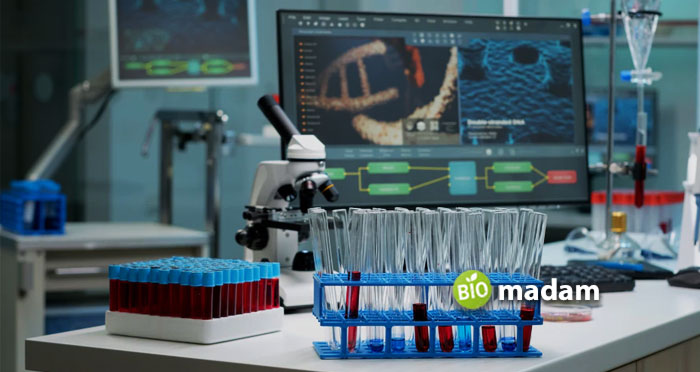Oncology and hematology are two branches of medicine that help understand different diseases. The main difference between oncology and hematology is the domain of study. Oncology refers to the study of different types of tumors. On the other hand, hematology studies blood cells and blood disorders. They are both essential to understanding the disease’s diagnosis and prognosis and offering an adequate treatment.
Let’s tell you all the differences between oncology and hematology in detail.
Comparison Table
| Characteristic | Oncology | Hematology |
| Definition | Study of cancer cells | Study of blood components |
| Types | Pediatric, , thoracic, surgical, gynecology and radiation | Hemoglobinopathy, anemia, malignancies and coagulopathy |
| Risk Factors | Immunosuppressants, toxic substances, tobacco | Heart issues, smoking, surgery, trauma, etc. |
| Symptoms | Weight gain or loss, skin tone changes, unhealed sores | Weight loss, fatigue, malaise |
| Diagnosis | X-ray, CT scan, MRI, ultrasound, endoscopy | CBC, PCT, PT test, blood enzyme test |
| Treatment | Chemotherapy, radiation therapy, biological therapy | Lifestyle changes, radiotherapy, blood transfusion, medication |
What is Oncology?
Oncology is a branch of medicine that deals with the study of cancer, including all of its causes.
Oncology comprises ‘onco,’ meaning mass or tumor, and ‘logy,’ translating to study. Thus, oncology is the study of the unwanted mass of cells, also known as cancer or neoplasia.
Oncology constitutes the study of benign and malignant tumors to understand the stage of the disease. The doctors observe the cysts or tumors to confirm the presence of cancer.
Oncologists contribute to diagnosing, treating, and preventing cancer and its spread. The major areas of oncology include surgical, medical, and radiation oncology. The doctor typically takes a biopsy for the diagnosis of cancer. Cancer may arise in varying body parts and different types of tissues in the body. Common sites of cancer in humans include the mouth, lungs, esophagus, kidney, liver, stomach, bladder, pancreas, colon, and rectum.

Types of Oncology
Cancers are classified into numerous categories according to various parameters. The major categories of cancers include surgical oncology, pediatric, radiation, gynecologic, and thoracic oncology.
Radiation Oncology
Radiation oncology refers to the application of radiation in the treatment of cancer. The cancerous cells are killed using high-energy radiation including X-rays and CT scans.
Surgical Oncology
Surgical oncology deals with the department of cancer that treats cancer through operation. Surgical oncologists are specialized in the removal of tumor cells through invasive surgery.
Thoracic Oncology
Thoracic oncology is related to lung cancer. Oncologists dealing with thoracic oncology treat patients with tumors in the lungs, spreading to the esophagus and trachea sometimes.
Gynecologic Oncology
Gynecology oncology is a specific oncology branch that helps understand and treat the cancers of the female reproductive system. It includes the understanding of different gynecological neoplasia like uterine cancer, cervical cancer, ovarian cancer, uterine cancer, vulvar cancer, and vaginal cancer.
Pediatric Oncology
Pediatric oncology studies all different types of cancers in children. The physical and emotional management of cancer differs in children from adults and requires a specialized physician to understand them.
Risk Factors
There are no particular triggers to most types of cancer, and it may grow anywhere, regardless. It starts to progress when the killer T cells of our immunity fails to kill cancerous cells. Some of the risk factors for cancer are:
- Age
- Obesity
- Chronic inflammation
- Toxic substances
- Hormones
- Alcohol
- Tobacco
- Immunosuppressant
Diagnosis
Cancers may or may not exhibit symptoms; thus, it can be difficult to locate cancer in the initial stages. However, diagnostic tools can help identify cancerous cells in the body. The common diagnostic tools include:
- X-ray and MRI
- CT Scan
- Ultrasound
- Blood tests
- Endoscopy
- Biopsy
- Scintigraphy
Treatment
Oncology is a vast branch of medicine and offers various treatment regimens according to the type and severity of the disease. The following treatments are involved in oncology:
- Chemotherapy
- Radiotherapy
- Surgery
- Biology therapy
- Hormone therapy
- Stem cell transplant
What is Hematology?
Hematology is the study of conditions and diseases of the blood.
The word hematology is a combination of two words, ‘heme’ meaning blood and ‘logy’ meaning study. Thus, the word translates to the study of blood.
Hematology involves the study of different components of blood like plasma, platelets, red blood cells, and white blood cells. The study of blood cells also involves examining hemoglobin and myoglobin to assess pathological conditions.
Hematological studies comprise observing blood samples under a compound or electron microscope. They help study blood disorders like hemophilia, sickle cell anemia, and idiopathic thrombocytopenic purpura.

Types of Hematology
Hematology is categorized into types depending on the type of disease. For example, some hematologists focus on stem cell diseases, while others study genetic disorders and blood cancers. The four types of hematology are:
Hemoglobinopathy
Hemoglobinopathy is concerned with the abnormality in globin chains of hemoglobin molecules. They are typically genetic diseases, including anemia and thalassemia.
Hematologic Malignancies
Hematologic malignancies refer to diagnosing and treating cancers in blood, bone marrow, and lymph nodes. Leukemia (cancer of white blood cells) is among the most common hematologic malignancies.
Anemia
The third branch of hematology is anemia, or lack of red blood cells. Anemias are further of various types and arise due to multiple underlying causes. Sickle cell anemia and iron deficiency anemia are the most prevalent types of anemia.
Coagulopathy
Coagulopathy is the body’s inability to form clots to prevent blood loss. It results from abnormality or derangement of hemostasis in the body.
Risk Factors
Some risk factors associated with hematological diseases include autoimmune reactions by the body and a diet rich in unhealthy fats and oils. Other risk factors include:
- Age
- Obesity
- Smoking
- Surgery
- Pregnancy
- Heart disease
- Kidney or thyroid issues
- Genetics
- Trauma
Diagnosis
A complete blood count, also known as CBC, is the most widely used diagnostic test in hematology. Further diagnostic parameters are:
- Blood chemistry test
- Blood enzyme test
- Platelet count test
- Prothrombin time test
- Partial thromboplastin time test
- Coombs test
Treatment
Hematological conditions vary significantly and are generally treated according to the underlying causes and symptoms. The following are the treatment options to cure a blood-based disease:
- Improvement in diet
- Blood pressure management
- Medication for specific disease
- Blood transfusion for anemia
- Therapeutic phlebotomy
- Radiotherapy
- Chemotherapy for blood cancer
Differences Between Oncology and Hematology
Definition
Oncology
Oncology refers to the study of cancerous cells and tumors in the body.
Hematology
On the other hand, hematology is the study of blood and diagnosing and treating blood-related diseases.
Types
Oncology
Oncology is categorized into various domains, including pediatric oncology, gynecology oncology, thoracic oncology, surgical oncology, and radiation oncology.
Hematology
The four divisions of hematology include hemoglobinopathy, hematologic malignancies, anemia, and coagulopathy.
Risk Factors
Oncology
While there are no specific triggers to cancer, a few elements, like autoimmune insufficiency, chronic inflammation, toxic substances, hormones from glands, immunosuppressants, and tobacco, may lead to cancer.
Hematology
Hematological diseases may be influenced by underlying factors like obesity, smoking, surgery, heart diseases, kidney or thyroid issues, trauma, or genetics.
Symptoms
Oncology
The symptoms that may alarm an oncologist regarding the possible presence of cancer cells include fatigue, unexplained weight gain or loss, changes in skin tone, and sores and injuries that won’t heal.
Hematology
The doctor may ask for hematological diagnostic tools if the patient complains of weight gain, fatigue, and chronic bacterial or viral infections.
Diagnosis
Oncology
Your physician may ask for an X-ray, MRI, CT scan, blood test, ultrasound, endoscopy, or biopsy to evaluate the presence of cancer.
Hematology
Diagnostic tests commonly used to find out hematological disorders include complete blood count, blood chemistry test, blood enzyme test, platelet count test, prothrombin time test, partial thromboplastin time test, and Coombs test.
Treatment
Oncology
The treatments involved in oncology include chemotherapy, radiotherapy, surgery, biological therapy, hormone therapy, and stem cell or bone marrow transplant.
Hematology
The treatment for hematological diseases and disorders is different from cancer and may include improvement in diet, blood pressure medication, blood transfusion, radiotherapy, therapeutic phlebotomy, and chemotherapy.
What is a Hematologist Oncologist?
While hematology and oncology are two different medicine divisions, hematological oncology combines them both. Hematological oncology refers to the study of cancers of the blood.
Hematologists specialize in the study of blood and blood cells. On the other hand, oncologists are experienced in cancer studies. Hematologist oncologists obtain expertise in both fields to diagnose and treat blood cancers.
A hematologist-oncologist diagnoses and treats cancer in patients of all ages. Yet, some may opt specifically for pediatric hematology oncology to treat children.
These specialists typically deal with different types of cancers, including:
- Leukemia
- Multiple myeloma
- Lymphoma
Your physician may refer you to a hematologist oncologist if they suspect cancerous cells in your circulatory or lymph system. A hematologist-oncologist will get a few diagnostic tests such as blood tests, image testing, biopsy, and bone marrow tests.
Depending on the result of the tests, they might tell you there are no cancer cells or offer suitable treatment. Some treatment options include:
- Chemotherapy
- Radiation therapy
- Immunotherapy
- Blood transfusion
- Bone marrow transplant
Do not worry if you have to see a hematologist-oncologist. They are skilled in their field and offer the best treatment for you to feel fit and healthy again.
The Bottom Line
Oncology and hematology are two critical branches of medicine that help diagnose and treat possibly fatal diseases. Blood and plasma are essential for body functioning as they enable oxygen transport through red blood cells. Alternatively, white blood cells fight diseases. Any changes leading to malfunctioning in any of the components of blood may result in serious health concerns. Similarly, the growth of unwanted cancerous cells is studied in oncology which is essential to nip cancer in the bud. The main difference between oncology and hematology is the anatomical and physiological components they deal with. Nonetheless, both are essential to ensure healthy living.
FAQs
What is the difference between oncology and medical oncology?
Oncology is the branch of medicine that deals with cancer, and a medical oncologist deals with diagnosing and treating cancer. The oncologist adopts different approaches like chemotherapy, radiation, biological therapy, and others needed.
What diseases fall under hematology?
As hematology deals with blood disorders, it includes anemia, hemophilia, thrombosis, and bone marrow failure. Furthermore, blood-related enzyme deficiencies, coagulation disorders, iron metabolism disorders, and Myeloid disorders.
Why is a hematologist an oncologist?
A hematologist can be an oncologist as well. Doctors who deal with blood-related cancers are known as hematologist oncologists.
What is the most common hematology disease?
Anemia is the most common blood disorder that translates to a lower hemoglobin level in the body. Lack of healthy red blood cells in the body can lead to different types of anemia like sickle cell, aplastic, thalassemia, megaloblastic anemia, etc.
What is normal hematology?
Hematology refers to the normal range of red blood cells or hemoglobin in the body. A healthy male has 4.5 million to 5.9 million cells/mcL, whereas a healthy female has 4.1 million to 5.1 million cells/mcL of red blood cells.

Anna has completed her degree in Pharmacy from the University of Hawaii. She is serving as a research assistant in a pharmaceutical company. She had a great interest in writing blogs, traveling to different parts of the US, and trying delicious recipes in her spare time.

